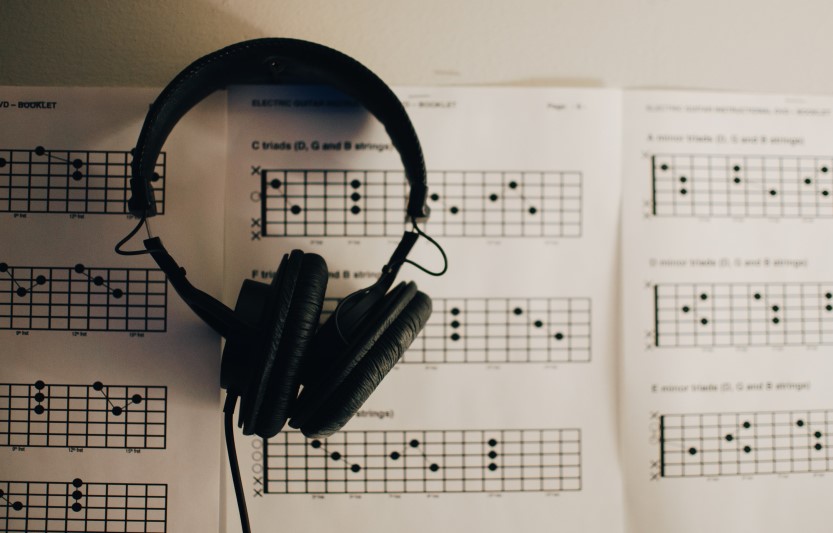
This guide to understanding chords in a simple way will give a stronger comprehension of harmony.
If that already sounds too complicated, don’t you worry! Here, we’re going to explain chords, which are the building blocks of harmony, in the simplest of ways.
If you have ever played guitar or ukulele, you probably know a few chords already and have a lot more to learn. In all honesty, the importance of chords cannot be overstated. Since the guitar is mostly an accompanying instrument, guitarists play chords most of the time. That is true even for guitar legends that play in front of thousands of fans. Unfortunately, chords sometimes get a bad rep, as something nerdy and complicated. Nothing further from the truth! So let’s dive into this guide to understanding chords in a simple way.
What is a chord?
A chord is two notes or more played at the same time. That’s it! Simple right? As a matter of fact, that is exactly what a power chord is. For those that like to get more technical, a power chord is just the root of the chord and the fifth. Often, the root is doubled an octave apart, in which case there would be three notes. From simple power chords, all the way to extended and complex dominant chords and those with fancier names like the neapolitan chord, the principle is the same. Play two or more musical notes at the same time, and you’ve got a chord.
Chords are related
A common misconception among beginners is that you have to learn hundreds, if not thousands of chords. The truth is that chords are related. Not only that, but you can also take a chord and expand it, compress it, embellish it, and transform it.
For instance, let’s look at a C chord and a Cmaj7 chord. Even though they are different chords, they share the same three notes (C, E, G), with Cmaj7 having an extra note (B). The scale that goes with those chords is the C scale, composed of C, D, E, F, G, A, B. Yes, just like you learned in kindergarten. Count seven notes from the C, and you’ll end up with a B. Hence the “7th” in Cmaj7. Simple enough right?
You can build all kinds of different C chords on top of the structure of that particular chord, or vary a few things. Naturally, this creates a vast variety of “new” chords. However, it is more practical to see how these relate, rather than viewing them all as completely unrelated chords.
Meet The Roadie Coach, The Personal Music Tutor
If you want to have the perfect aid for your guitar learning journey, check out Roadie Coach. This fantastic tool can track your progress in several ways and help you get better on the guitar. It features a high-quality recorder where you can record yourself for immediate feedback. Additionally, Coach also comes with a library of songs that you can add to your repertoire later.
Even different chords are related
Here’s another nugget of information for you. The C and Am chords are two-thirds identical. That means that two out of their three notes are exactly the same. The C chord has the notes C, E, G and the Am chord has the notes A, C, E. As a matter of fact, to change from a C to an Am on guitar, all you have to move is one finger, while the others stay put.
These relationships among chords expand far and wide, and you can learn the main ones with time. Best of all, knowing these will severely expand your ability to play chords and make you a better musician in the process.
Learning chords and how they work is a massive part of becoming a good musician. Chords are the building blocks of harmony and progressions, which are used for accompaniment in songs and pieces. As a result, guitar players play mostly chords. Naturally, as with any other aspect of playing an instrument, the more you practice, the better you get at chords.
Perhaps the most important point of this article is to understand that chords are not unrelated entities that exist in a vacuum. Chords, along with progressions, have structures that connect them in more ways than a beginner guitar player may realize. So take the time to learn chords and how they work together, and remember to have fun!


